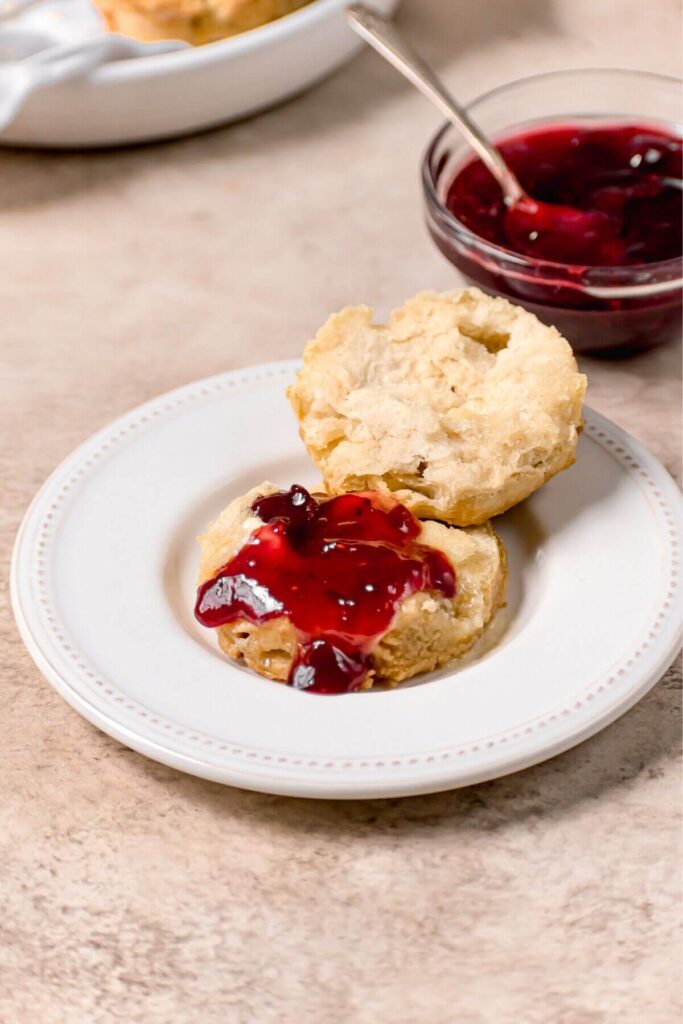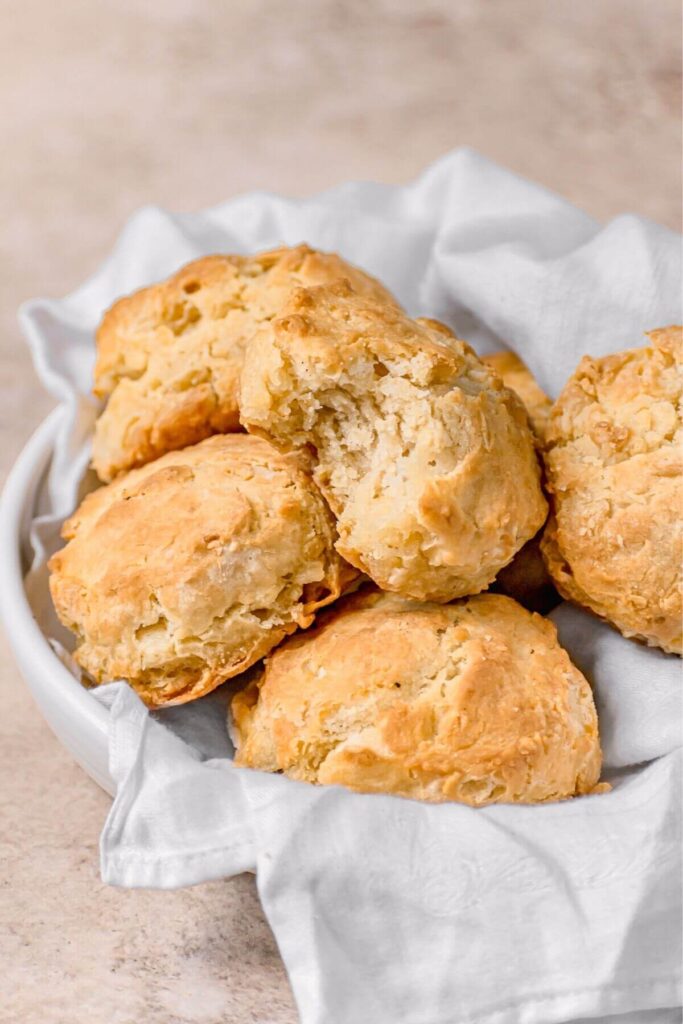Biscuits, those fluffy, flaky, and delectable treats, are a staple in many households. Traditionally made with dairy milk, biscuits can be enjoyed as a breakfast item, a side dish, or even as a dessert. However, for those with dairy allergies or lactose intolerance, or simply those looking for a healthier alternative, almond milk presents itself as a viable substitute. This article will delve into the world of biscuits, exploring the possibility of using almond milk instead of regular milk, and providing a comprehensive guide to creating delicious, dairy-free biscuits.
Understanding the Role of Milk in Biscuits
Milk plays a crucial role in the texture and flavor of biscuits. It adds moisture, richness, and tenderness to the dough, contributing to the overall appeal of these baked goods. When milk is combined with flour and other dry ingredients, it forms a gluten network. This network gives biscuits their characteristic structure and chewiness. Additionally, the fat content in milk contributes to the flakiness of biscuits, creating those desirable layers that melt in your mouth.
Almond Milk: A Dairy-Free Alternative
Almond milk, derived from almonds, has emerged as a popular dairy-free alternative due to its creamy texture, nutty flavor, and nutritional value. It is a rich source of vitamins, minerals, and healthy fats, making it a healthier choice compared to regular milk. In the context of biscuit-making, almond milk can effectively replace dairy milk, providing similar moisture and richness to the dough.
Benefits of Using Almond Milk in Biscuits
Substituting almond milk for dairy milk in biscuits offers several advantages:
-
Dairy-free: Almond milk is naturally dairy-free, making it an ideal choice for individuals with dairy allergies or lactose intolerance.
-
Healthier: Almond milk is lower in calories and fat compared to dairy milk, making it a healthier alternative. It is also a good source of vitamins, minerals, and antioxidants.
-
Nutty Flavor: Almond milk imparts a subtle nutty flavor to biscuits, adding an extra layer of depth and complexity to the taste.
How to Use Almond Milk in Biscuits
Using almond milk in biscuits is straightforward. Simply follow these steps:
-
Choose the Right Almond Milk: Opt for unsweetened almond milk to avoid adding unnecessary sweetness to your biscuits.
-
Measure and Substitute: Measure out the amount of almond milk called for in the recipe and substitute it for the dairy milk.
-
Adjust Gradually: If you are unsure about the consistency of the dough, start by adding almond milk gradually until you reach the desired texture.
Tips for Making Perfect Almond Milk Biscuits
-
Use Cold Ingredients: Cold ingredients, including almond milk and butter, help create flakier biscuits.
-
Don’t Overmix: Overmixing the dough can result in tough biscuits. Mix just until the ingredients are combined.
-
Knead Gently: Knead the dough gently to avoid developing the gluten network too much, which can lead to dense biscuits.
-
Cut with a Biscuit Cutter: Use a biscuit cutter to cut out even-sized biscuits, ensuring consistent baking.
In conclusion, using almond milk instead of milk in biscuits is not only possible but also offers several benefits. Almond milk provides a dairy-free alternative, adds a subtle nutty flavor, and contributes to the nutritional value of biscuits. By following the tips and instructions outlined in this article, you can create delicious, fluffy, and flaky almond milk biscuits that will satisfy your cravings without compromising your dietary restrictions or health goals.
Can I freeze biscuit dough?
Yes, make the biscuit dough and tightly wrap it in plastic wrap (do not cut out individual biscuits). Freeze for up to 2-3 months. When baking time comes, defrost the biscuits in the fridge for the entire night, then cut them out and bake.

Tips for the best homemade biscuits
I have tested this recipe countless times. Thus, believe me when I say that these are my top four suggestions for making delicious, flaky, fluffy biscuits at home:
- Use COLD unsalted butter. For this biscuit recipe, cold butter cubes are a must. The cold butter pieces will melt in the oven’s heat and release steam, which is what gives the biscuits their flaky, delicious layers.
- Do not skip out on the lemon juice. Since almond milk has less fat than traditional buttermilk, we’re using it instead. However, we need to add a little acidity to the dough to create the necessary reaction for the biscuits to rise, which will enable them to become nice and fluffy.
- Don’t over mix the dough. Please take care not to overwork this dough as it will result in flat biscuits. To ensure this, gently mix the dough until just combined. It will have a crumbly texture with some flour that isn’t completely combined.
- Do not twist the biscuit cutter. To cut the biscuits, simply press down; if you don’t, they will seal off and lose their buttery flakey layers.

DIY How To Make Buttermilk With Almond Milk
FAQ
Can I substitute almond milk for milk in biscuits?
Can almond milk be substituted for regular milk?
Does almond milk make a difference in baking?
Which milk is best for biscuits?
Can I use almond milk instead of buttermilk for biscuits?
In place of classic buttermilk, we are using almond milk which is lower in fat. However, to create the necessary reaction in the dough for the biscuits to rise, we need to add a little acidity! This will allow the biscuits to get nice a fluffy. Don’t over mix the dough. Whatever you do, do not overwork this dough because the biscuits will be flat.
Is almond milk safe for consumption?
Yes. Almond milk is a nutritious, low-calorie, dairy-free milk alternative that may help lower the risk of heart disease. But, it is important to choose almond milk that does not contain added sugar.
Can I substitute almond milk for regular milk in baking?
It is also important to note that almond milk does not contain any lactose, so it is not suitable for people who are lactose intolerant. Here are some tips for substituting almond milk for regular milk in your baking: – When substituting almond milk for whole milk, use 1 cup of almond milk for every 1 cup of whole milk.
How to make buttery almond milk biscuits?
Fluffy southern style biscuits are actually really easy to make. First, we will combine the flour, then we will cut the cold butter into the flour and add in the almond milk, and finally we will turn out the dough and cut out the biscuits. Here is step-by-step instructions on how to make buttery almond milk biscuits:
